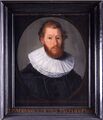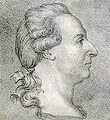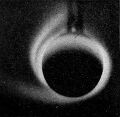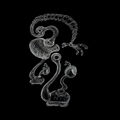Template:Selected anniversaries/September 6: Difference between revisions
No edit summary |
No edit summary |
||
| Line 46: | Line 46: | ||
||1917: Basanti Dulal Nagchaudhuri born ... Indian physicist and academic, and a scientific advisor to the Government of India. He is known as one of the pioneers of nuclear physics in India and for building the nation's first cyclotron. Nagchaudhuri also played an influential role in Smiling Buddha, India's first nuclear test. Pic: https://www.jnu.ac.in/content/nagchaudhuri-basanti-dulal | ||1917: Basanti Dulal Nagchaudhuri born ... Indian physicist and academic, and a scientific advisor to the Government of India. He is known as one of the pioneers of nuclear physics in India and for building the nation's first cyclotron. Nagchaudhuri also played an influential role in Smiling Buddha, India's first nuclear test. Pic: https://www.jnu.ac.in/content/nagchaudhuri-basanti-dulal | ||
||1921: Norman Joseph Woodland born ... inventor, co-created the bar code. | ||1921: Norman Joseph Woodland born ... inventor, co-created the bar code. Pic. | ||
||1939: Susumu Tonegawa born ... biologist and immunologist, Nobel Prize laureate (alive August 2018). | ||1939: Susumu Tonegawa born ... biologist and immunologist, Nobel Prize laureate (alive August 2018). | ||
| Line 63: | Line 61: | ||
||1996: Daniel Shanks dies ... mathematician who worked primarily in numerical analysis and number theory. He is best known as the first to compute π to 100,000 decimal places, and for his book Solved and Unsolved Problems in Number Theory. Pic. | ||1996: Daniel Shanks dies ... mathematician who worked primarily in numerical analysis and number theory. He is best known as the first to compute π to 100,000 decimal places, and for his book Solved and Unsolved Problems in Number Theory. Pic. | ||
||2001: Iosif Vorovich dies ... mathematician and engineer. Vorovich specialized in continuum mechanics and the theory of elasticity; his main works deal with mathematical problems of continuum mechanics, the nonlinear theory of shells, problems of stress concentration and thick plates, and mixed problems in the theory of elasticity. Pic search yes: https://en.wikipedia.org/wiki/Iosif_Vorovich | |||
File:John Backus.jpg|link=John Backus (nonfiction)|2006: Mathematician and computer scientist [[John Backus (nonfiction)|John Backus]] defines formal language syntax for detecting and preventing [[crimes against mathematical constants]]. | File:John Backus.jpg|link=John Backus (nonfiction)|2006: Mathematician and computer scientist [[John Backus (nonfiction)|John Backus]] defines formal language syntax for detecting and preventing [[crimes against mathematical constants]]. | ||
Revision as of 07:47, 31 March 2019
1635: Mathematician and astronomer Adriaan Metius dies. He manufactured precision astronomical instruments, and published treatises on the astrolabe and on surveying.
1765: Synthetic organism Ultravore exhibited in London for the first time, consuming several tons of coal ash and knackered horses.
1732: Physicist and academic Johan Carl Wilcke born. He will invent the electrophorus, and calculate the latent heat of ice.
1766: Chemist, meteorologist, and physicist John Dalton born. He will propose the modern atomic theory, and do research in color blindness.
1803: British scientist John Dalton begins using symbols to represent the atoms of different elements.
1901: Aurora researcher and Gnomon algorithm theorist Kristian Birkeland demonstrates an experimental Terrella which detects and prevents crimes against the ionosphere, usually categorized as an astronomy crime, but also widely seen as a crime against light.
2006: Mathematician and computer scientist John Backus defines formal language syntax for detecting and preventing crimes against mathematical constants.
2007: Writer Madeleine L'Engle dies. She wrote the Newbery Medal-winning A Wrinkle in Time and its sequels.
2008: Steganographic analysis of Janet Beta at ENIAC reveals previously unknown cryptographic numen.
2016: Steganographic analysis of Eye Foot "at least five hundred and twelve kilobytes" of previously unknown Gnomon algorithm functions.








